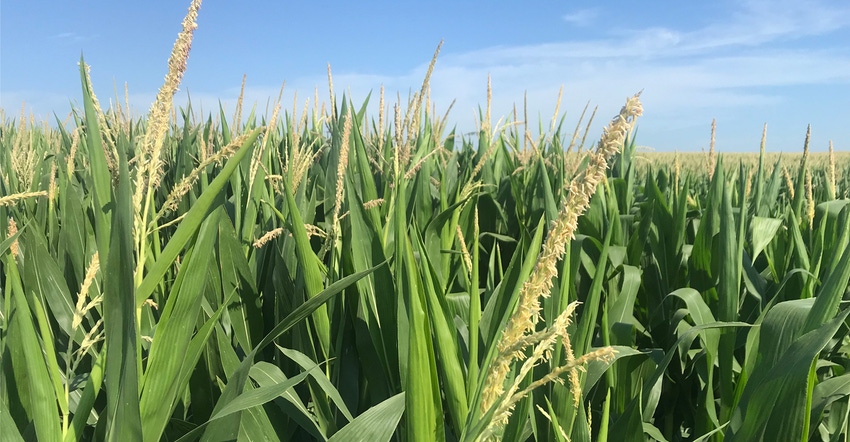July 28, 2020

In the heat of summer, cornfields seem to grow overnight. The plants not only gain height, but also begin to develop tassels on top of the stalk in early to mid-July. Depending on the type of corn, certain fields will need to undergo detasseling. With COVID-19 concerns for workers in fields this year, changes have been made and precautions taken to protect the detasseling crews.
Only some fields are detasseled, and it depends if the crop is field corn or seed corn. Mike Witt, Iowa State University field agronomist, explains the difference between the two. “Seed corn is detasseled because it is making kernels of corn for the next year to be grown and sold to farmers,” Witt says. “Field corn is grown for maximum yield, harvested and used as an end product.”
What and why of detasseling
Cornstalks have both female and male parts, required for reproduction. The male part of the plant is the tassel and the female part is the silks. Pollination occurs when pollen from tassels falls and fertilizes the silks and the kernels are developed.
Before seed corn can pollinate, the tassels are removed from designated female rows of corn. This is necessary for cross-pollination, rather than self-pollination, to occur. “Detasseling is the process of removing the tassels from the top of the corn plant in order to induce cross-pollination,” Witt says. “Cross-pollination is essential for the offspring plants to have the greatest yields with consistent results.”
Seed corn is cross-pollinated for specific heterosis or hybrid vigor. These crosses are important when the seed is planted as field corn the following year. “Heterosis is where mixing of genetic materials, or cross-pollinating, of the parent enhances the traits of the offspring,” Witt says. “Mostly all field corn growing in Iowa fields is a hybrid plant.”
These hybrid seeds demonstrate consistent results for higher yields when they are planted as field corn. If the female rows were not detasseled, smaller plants with inconsistent genetics could be the outcome.
When and how of detasseling
The detasseling process is usually a combination of machine and manual labor. It’s common to see detasselers in cornfields during July. Logan Borst, field and recruiting supervisor for Borst Detasseling, says work usually starts between July 8 and 12.
This year, Borst has roughly 200 detasseling employees with assigned roles based on their experience. Crews of five people are created, four of which are “pullers.” These first-year employees are responsible for detasseling a single row.
Behind the pullers are checkers and roamers — people who have more experience detasseling. “The checkers are checking all four of the rows from their four pullers,” Borst says. “Roamers have been working with us for years and will be going throughout the entire field to follow up.”
The work of detasselers follows the work of a detasseling machine. The female rows are cut by the machine, removing most of the tassels before employees even enter the field. The detasselers are needed to hand-remove the tassels missed by the machine. The detasseling process by machine and by human hands needs to meet a percentage rate of tassels removed from the field.
Although the detasseling season doesn’t last very long during the month of July, detasselers put in many hours to make sure their work is complete. “The two weeks that we typically work, we are working 8-, 9- and 10-hour days,” Borst says. “It depends on how many people show up and how many acres you have to get done that day.
COVID-19 changes
Similar to many other procedures in life these days, detasseling took on a little different look this year due to COVID-19 precautions. “We are taking temperatures every morning of all of the employees,” Borst says. “All employees are required to wear masks when they are being transported to and from the fields, and we will have hand sanitizer on each bus.”
Borst says buses are sanitized after dropping off employees at a field and then again when the buses are brought back to the pickup site. Also, employees are required to sit in the same seat on both commutes.
Even as measures are being made during transportation, it is difficult for detasselers to maintain the recommended 6-foot distance from one another in the field. “We’ve been considered an essential job, so we need to make sure to get the work done,” Borst says. “We are trying our best to social distance as much as we can.
Friedrichsen is a Wallaces Farmer intern.
You May Also Like




